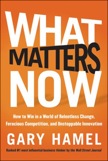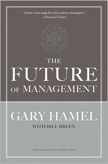Busting Bureaucracy, for Good
If you want to win in a world of nimble, hungry upstarts, bureaucracy has to die. Young companies are bold, flexible and quick. Big companies, not so much. Research suggests that an excess of bureaucracy—too many layers and too many rules—costs OECD economies $9 trillion each year in lost economic output. Nevertheless, most struggle to imagine an alternative. Bureaucracy seems essential for achieving the control, coordination and consistency that allow large organizations to function. For decades that was true. Now it is not.
A growing number of vanguard companies are proving it is possible to buy the benefits of bureaucracy duty-free. On average, these post-bureaucratic trailblazers enjoy a 30-50% productivity advantage over their peers, and are far more fleet-footed. Svenska Handelsbanken, the world's most consistently profitable bank, has three management layers. Nucor, the highly innovative steel-maker has no central R&D and a head office of fewer than 100 individuals. Haier, a global leader in the appliance industry, has turned itself into a "platform" of 4,000 highly autonomous "micro-enterprises." Turns out you can be big and fast, efficient and supple, disciplined and courageous.
For more than a decade, Gary Hamel has been helping progressive-minded organizations "uninstall" bureaucracy. Doing so requires three things…
• Motivation: Organizations get serious about busting bureaucracy when they start to measure its hidden costs. Every organization needs to calculate its BMI—"Bureaucracy Mass Index."
• Models: It's hard to begin a journey when you can't imagine the destination. Luckily, the post-bureaucratic pioneers help point us in the right direction.
• Migration: You don't build a post-bureaucratic organization with a grand, top-down change program. Instead, you must build migration paths by launching many small, yet radical, experiments designed to test and refine new, "post-bureaucratic" practices. The payoff: an organization that is flat, open and free.





